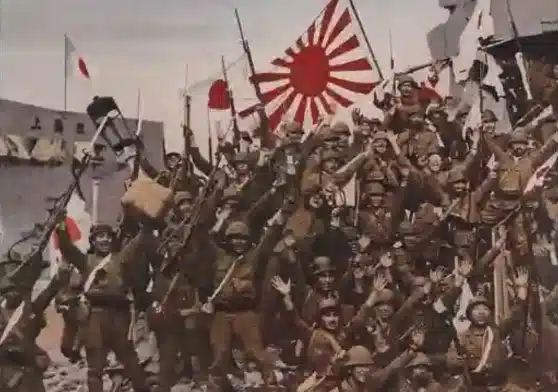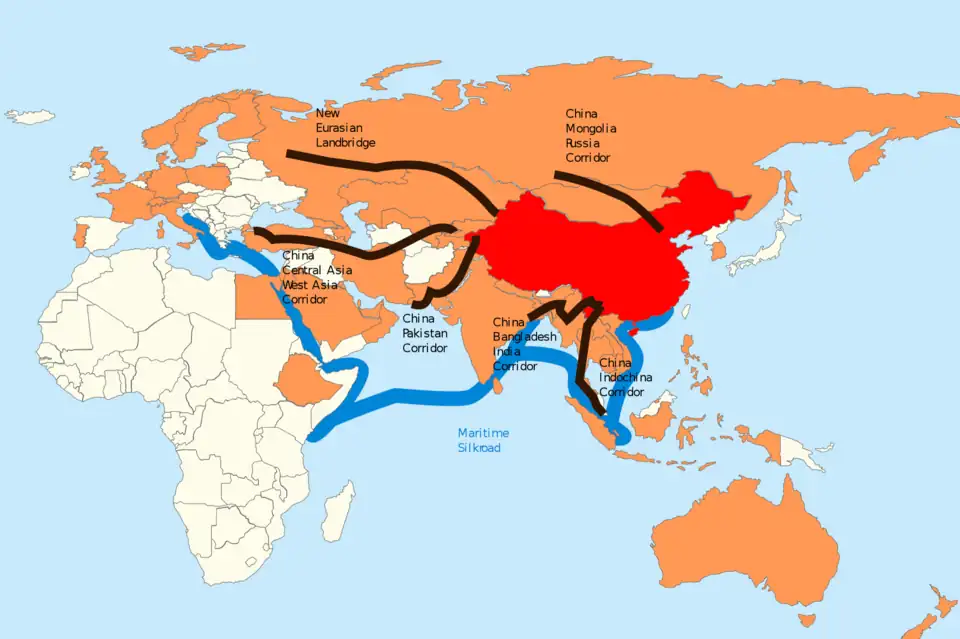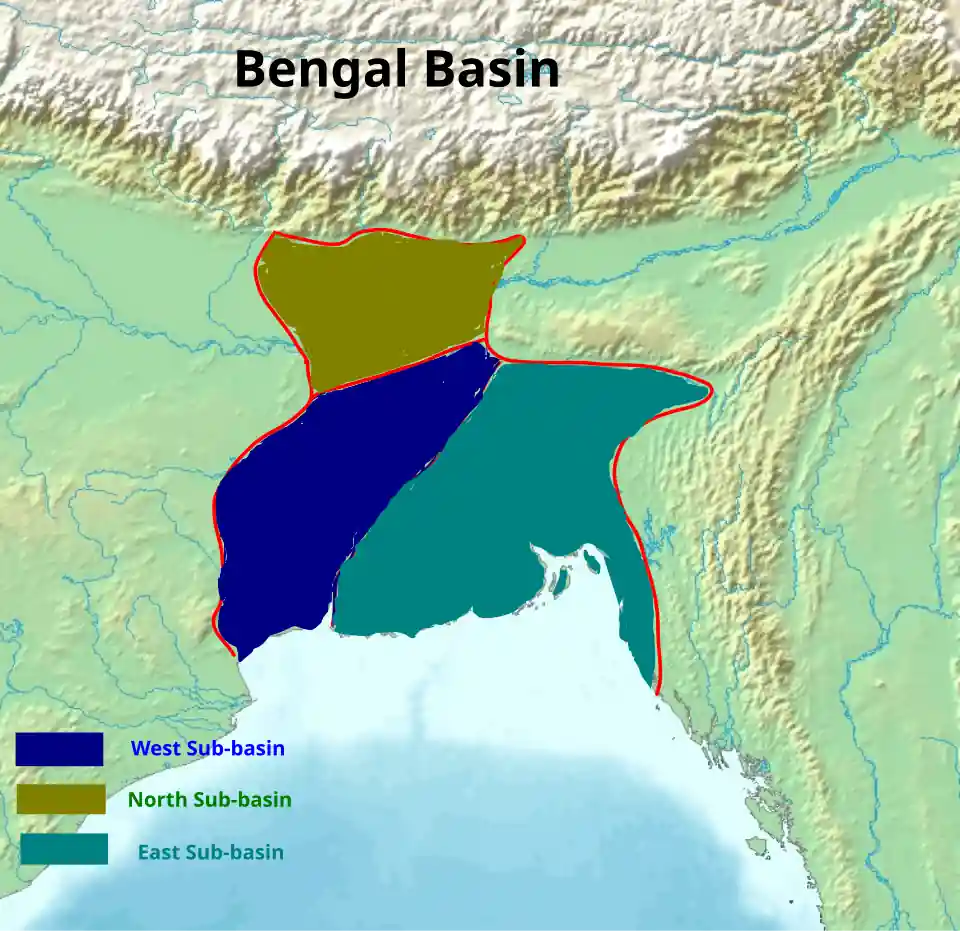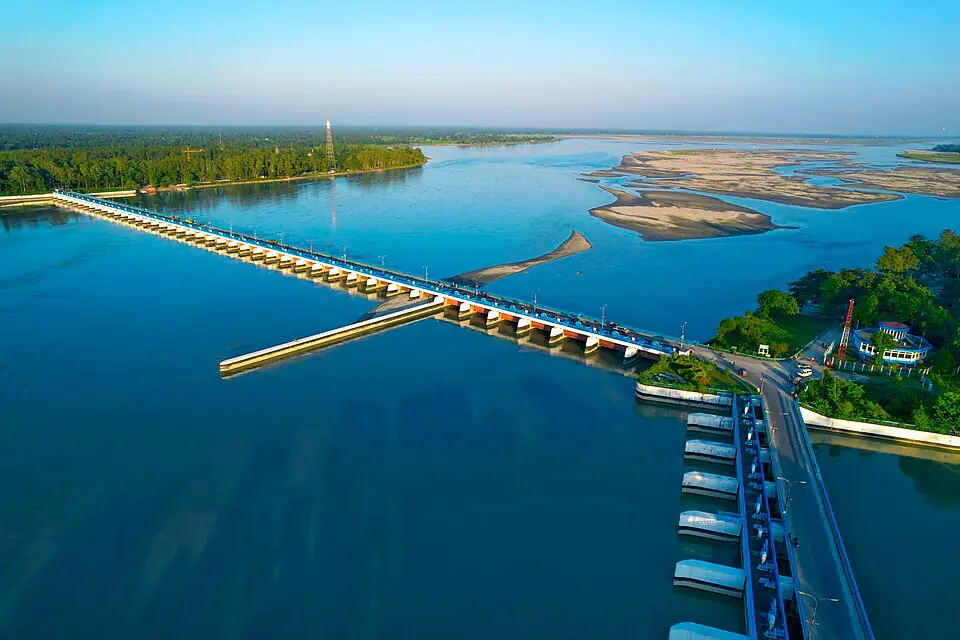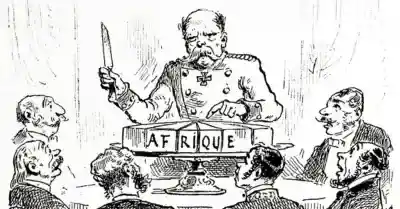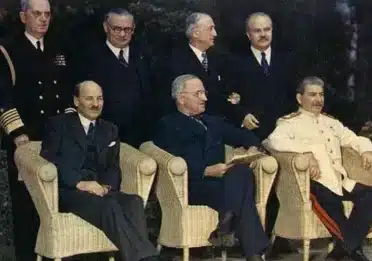The French Colonial Era in Vietnam: A Historical Overview
Vietnam came under French control in the late 19th century. In 1887, the French established French Indochina, which included Vietnam, Laos, and Cambodia, as a colonial federation. Vietnam, specifically, was divided into three regions: Tonkin (the north), Annam (the central region), and Cochinchina (the south). French colonization in Vietnam lasted for approximately 87 years, from the establishment of French Indochina in 1887 until 1954.
French explorers aimed to establish a profitable trade route to China through northern Vietnam, but were impeded by the Black Flag Army led by Liu Yongfu. In 1873, a French force led by Lieutenant de Vaisseau Francis Garnier attacked northern Vietnam but was defeated by the Black Flag.
 |
| Source of Image: Google, The Son Tay Campaign, 1883 |
This article provides an overview of the French Colonization of Vietnam, examining its causes and consequences from a geopolitical perspective. It aims to delve into the complexities of the conflict, offering insights into the factors that led to its occurrence and its broader impact on the nations involved and the geopolitical landscape of the time.
💻 Table of Contents:
- Sino-French War’s Origins: French Aggression and Chinese Involvement
- Black Flag Challenge: France’s Offensive Plans and Escalating Tensions with China
- The Sino-French War (1884-1885): French Colonization and Consequences
- The United States Enters the Conflict: Escalation in Vietnam
Sino-French War’s Origins: French Aggression and Chinese Involvement
Chinese rule over Vietnam commenced in 111 BC and endured until 938 AD, marking Vietnam’s declaration of independence. The Han Dynasty’s influence began when they established a presence in the Red River Delta, attracted by Vietnam’s fertile lands and its strategic position as a trade route connecting India and China. Expanding their territory to Northern Vietnam in 111 BC, the Han Dynasty captured and governed various regions, including Vietnam. However, the Vietnamese people successfully regained their independence in 939 AD and maintained it for several centuries. This period of independence lasted until the establishment of French Indochina, when Vietnam fell under French colonial rule.
The Sino-French war was a conflict driven by the French desire to establish control over Annam (Vietnam), a region that had a complex history as a tributary state to China since the time of the Han dynasty. The French aimed to separate Annam from Chinese influence and transform it into a French protectorate, leading to the outbreak of the war.
 |
| Source of Image: Google, The Capture of Lang-Son |
The Sino-French War, or Tonkin War, occurred from August 1884 to April 1885 involving China, France, and Vietnam. Despite no formal war declaration, it resulted in a limited conflict. China performed relatively well on land, but faced challenges such as lack of foreign support, French naval strength, and threats from Russia and Japan. Eventually, negotiations were forced upon China.
The war led to France gaining influence over Tonkin and turning Annam into a French protectorate. French interest in northern Vietnam began in the late 18th century, supporting Nguyễn Ánh with French volunteers. In 1858, the French started their colonial campaign, annexing southern provinces in 1862 as Cochinchina.
In 1881, French Commandant Henri Rivière was sent to Hanoi to address complaints about French merchants. However, disregarding orders, Rivière launched an attack on Hanoi’s citadel in 1882, causing concern in Vietnam and China. The Vietnamese sought help from Liu Yongfu and requested Chinese support, leading to the deployment of Chinese troops in Tonkin in 1882.
Rivière’s capture of Nam Định in 1883 escalated tensions. Despite facing Vietnamese and Black Flag attacks, Rivière gained support from the French government due to a change in leadership. In response, China, led by Mandarin Tang Jingsong, convinced Liu Yongfu to fight against Rivière, resulting in a year of unconventional warfare.
By April 1883, realizing the Vietnamese resistance was weak, China and France negotiated a division of Tonkin into French and Chinese spheres without consulting Vietnam. This event set the stage for further conflicts and significant geopolitical changes in the region.
 |
| Source of Image: Google, Indochina War 1952 |
Black Flag Challenge: France’s Offensive Plans and Escalating Tensions with China
The Black Flag Army, possibly consisting of former Taiping rebels (ethnic Zhuang soldiers who mostly live in the Guangxi Zhuang Autonomous Region in Southern China), crossed from China to Vietnam in 1865. They gained recognition for fighting against the French with support from Vietnamese and Chinese authorities. The army was named after their commander, Liu Yongfu, who favored using black command flags.
In May 1883, Liu Yongfu, leader of the Black Flag Army, challenged the French to battle in Hanoi, Vietnam. The French suffered a big defeat and their commander, Rivière, was killed. France sent more troops to stabilize the situation. In August, Admiral Courbet attacked near Huế, leading to the Treaty of Huế, which put Tonkin under French protection.
General Bouët took charge of the French forces and attacked Black Flag positions along the Day River. Although they won some battles, Bouët was seen as unsuccessful and resigned. Flooding caused Liu Yongfu to retreat.
Later in 1883, France planned a major attack on the Black Flags. Negotiations with China failed, and tensions between the countries escalated. France hoped defeating the Black Flags would make China accept the situation. In December, Admiral Courbet led the Sơn Tây Campaign, capturing the city but suffering heavy casualties. Liu Yongfu felt betrayed and avoided open battles.
The growing tension between France and China led to anti-foreign protests in China. European powers sent gunboats to Guangzhou to protect their people. Overall, the events of 1883 were a crucial phase in the Tonkin War, involving battles, negotiations, and rising tensions between France and China.
The Sino-French War (1884-1885): French Colonization and Consequences
In March 1884, General Charles-Théodore Millot led the French in a successful offensive in Tonkin, securing a pivotal victory at Bắc Ninh on March 12, 1884. This triumph paved the way for the capture of Hanoi, marking French dominance in Tonkin.
In response, China reinforced its troops and initiated a naval blockade, leading to the Battle of Fuzhou on August 23, 1884. In this battle, the French navy launched a successful attack on the Chinese fleet stationed near Fuzhou, a major port in southeastern China. The French forces managed to destroy the Fuzhou dockyard and achieved a decisive victory at sea.
 |
| Source of Image: Google, Governor-General French Indochina |
The neutral British and American ships observed the battle with professional interest. Within an hour, nine Chinese ships, including the flagship of the Fujian Fleet called the Yang Wu, were sunk. The Chinese suffered heavy losses, with possibly around 3,000 casualties, while the French losses were minimal.
Towards the end of the Sino-French War, Japan’s actions in Korea and strained relations with China, as well as the potential intervention of Russia, influenced China’s decision to seek peace with France. The deteriorating relationship between Japan and China, along with the threat of Russian involvement, created a sense of urgency.
On 9 June 1885, Chinese Foreign Minister Li Hongzhang and Patenotre, a French representative, signed the Tianjin peace treaty. This agreement marked the end of the Sino-French war and established French control over Indochina. As a result of the treaty, Annam came under French control as a vassal state, and it marked the establishment of French Indochina, which had a significant impact on the geopolitical landscape in East Asia.
The peace treaty confirmed France’s victory in the Sino-French War. As part of the treaty, France had to give up Keelung and the Penghu Islands, but China’s withdrawal from Tonkin allowed the French to regain control of Lạng Sơn and expand their presence along the Red River towards Lào Cai. Although they faced resistance from Vietnamese forces, France gradually established their authority in the regions of Annam and Tonkin.
In 1887, the territories of Cochinchina, Annam, Tonkin, and Cambodia were combined to form French Indochina. Later, in 1893, Laos was added to French Indochina after it was relinquished by Siam (now Thailand) as a result of the Franco-Siamese War. These events marked the consolidation of French colonial rule in Southeast Asia, with the establishment of French Indochina encompassing Vietnam, Cambodia, and Laos.
💻 You May Also Read:
- The Cold War: Collapse of Soviet’s Communist Empire & American Triumph
- The French Revolution: Causes, Consequences and Legacy
- The French and Indian War: A Key Chapter in the Anglo-French Rivalry
The treaty had broader geopolitical implications in East Asia. China’s defeat highlighted its military vulnerabilities and exposed its susceptibility to foreign influence. France, on the other hand, expanded its colonial empire in Southeast Asia.
The United States Enters the Conflict: Escalation in Vietnam
During colonial rule in Vietnam, the French implemented policies that aimed to exploit Vietnam’s resources and establish control over the local population. They introduced significant changes in governance, infrastructure development, and the economy, but these changes were primarily in the interest of French colonial authorities.
Liu Yongfu’s armies played a significant role in the history of Vietnam during the late 19th century. As a prominent leader of the Black Flag Army, Liu Yongfu led his forces in resistance against French colonial expansion, becoming a symbol of Vietnamese resistance and independence.
In the midst of World War II, Japan had occupied Vietnam and used it as a base to further its own interests. However, with Japan’s surrender in 1945, a power vacuum emerged in Vietnam. The Viet Minh, a nationalist and communist organization led by Ho Chi Minh, took advantage of the situation and declared Vietnam’s independence from French colonial rule in September 1945. However, France refused to recognize Vietnam’s independence and sought to reestablish its control over the region.
This led to a series of conflicts, known as the First Indochina War, between the Viet Minh and French forces. The war lasted from 1946 to 1954 and resulted in significant casualties and devastation. Ultimately, France was defeated at the decisive Battle of Dien Bien Phu in 1954, leading to the Geneva Accords, which temporarily divided Vietnam into the communist-controlled North and the anti-communist South.
The attempt by France to regain control over Vietnam after Japan’s surrender ultimately fueled the escalation of hostilities that would eventually lead to the Vietnam War between North and South Vietnam, with the involvement of the United States and other countries. The Vietnam War, also known as Second Indochina War, took place in Vietnam, Laos, and Cambodia from November 1, 1955, until the fall of Saigon on April 30, 1975. It was the second major conflict of the Indochina Wars and played a significant role in the Cold War period.
The United States entered the Vietnam War for several reasons. Firstly, Vietnam wanted independence from French colonial rule, and Ho Chi Minh led the resistance for Vietnamese independence. Secondly, there was a civil war between North and South Vietnam, with the communist North led by Ho Chi Minh and the capitalist South led by Ngo Dinh Diem. Besides, the US feared the spread of communism in the region, following the Domino Theory, and aimed to support the South Vietnamese government.
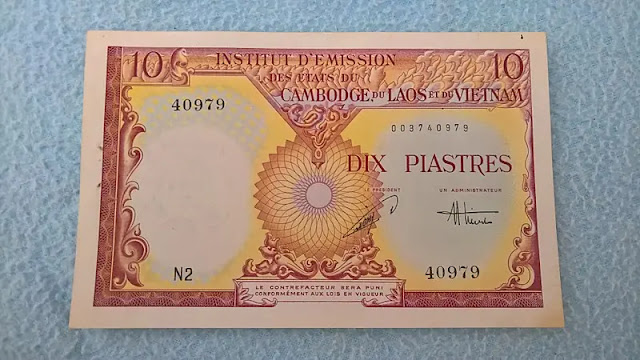 |
| Source of Image: Google, 10 Piastres French Indo-China |
And lastly The Gulf of Tonkin Incident in 1964, where North Vietnamese boats attacked a US Navy destroyer, led to the US escalating the war. The US Congress passed the Gulf of Tonkin Resolution, giving President Johnson permission to wage war on North Vietnam. This resulted in a significant increase in US involvement, with over half a million troops in Vietnam by 1968. The Vietnam War saw a large presence of American troops, with the cost of the war reaching $77 billion annually. Despite its efforts, Vietnam, Laos, and Cambodia fell to communist forces, leading to the reunification of Vietnam in July 1976.
Conclusion:
In conclusion, the French colonization of Vietnam from the late 19th century until 1954 had profound geopolitical consequences. The Sino-French War, also known as the Tonkin War, played a crucial role in establishing French control over Vietnam and marked the beginning of an era of French colonial rule. The war resulted in China’s withdrawal from Tonkin and the subsequent division of Vietnam into French-controlled territories.
The French occupation sparked resistance movements, most notably the Black Flag Army led by Liu Yongfu, which symbolized Vietnamese resistance against foreign domination. The conflict between the French and the Viet Minh, under the leadership of Ho Chi Minh, escalated into the First Indochina War, which ultimately resulted in France’s defeat at the Battle of Dien Bien Phu.
The consequences of French colonization and the subsequent conflicts set the stage for the Vietnam War. The division of Vietnam under the Geneva Accords and the involvement of the United States and other countries in the region further escalated the conflict and led to a protracted and devastating war that lasted for several decades.
The French colonization of Vietnam and the subsequent events exemplify the complex dynamics of imperialism, nationalism, and Cold War politics in Southeast Asia. The impact of this period continues to shape the history and geopolitics of the region to this day.
Frequently Asked Questions
The Sino-French War was a conflict driven by the French desire to establish control over Annam (Vietnam), a region that had a complex history as a tributary state to China since the time of the Han dynasty. The French aimed to separate Annam from Chinese influence and transform it into a French protectorate, leading to the outbreak of the war.
The Black Flag Army, possibly consisting of former Taiping rebels (ethnic Zhuang soldiers who mostly live in the Guangxi Zhuang Autonomous Region in Southern China), crossed from China to Vietnam in 1865. They gained recognition for fighting against the French with support from Vietnamese and Chinese authorities. The army was named after their commander, Liu Yongfu, who favored using black command flags.
China reinforced its troops and initiated a naval blockade, leading to the Battle of Fuzhou on August 23, 1884. In this battle, the French navy launched a successful attack on the Chinese fleet stationed near Fuzhou, a major port in southeastern China. The French forces managed to destroy the Fuzhou dockyard and achieved a decisive victory at sea.
The Vietnam War, also known as the Second Indochina War, took place in Vietnam, Laos, and Cambodia from November 1, 1955, until the fall of Saigon on April 30, 1975. It was the second major conflict of the Indochina Wars and played a significant role in the Cold War period.
The U.S. entered Vietnam to prevent a communist takeover, aiming to contain the spread of communism during the Cold War. Despite its efforts, Vietnam, Laos, and Cambodia fell to communist forces, leading to the reunification of Vietnam in July 1976. Why did France go to war with China?
Who were the Black Flag fighters in Vietnam?
What happened in the Sino-French War?
Who won the First Indochina War?
Why did the U.S. go to war with Vietnam?

